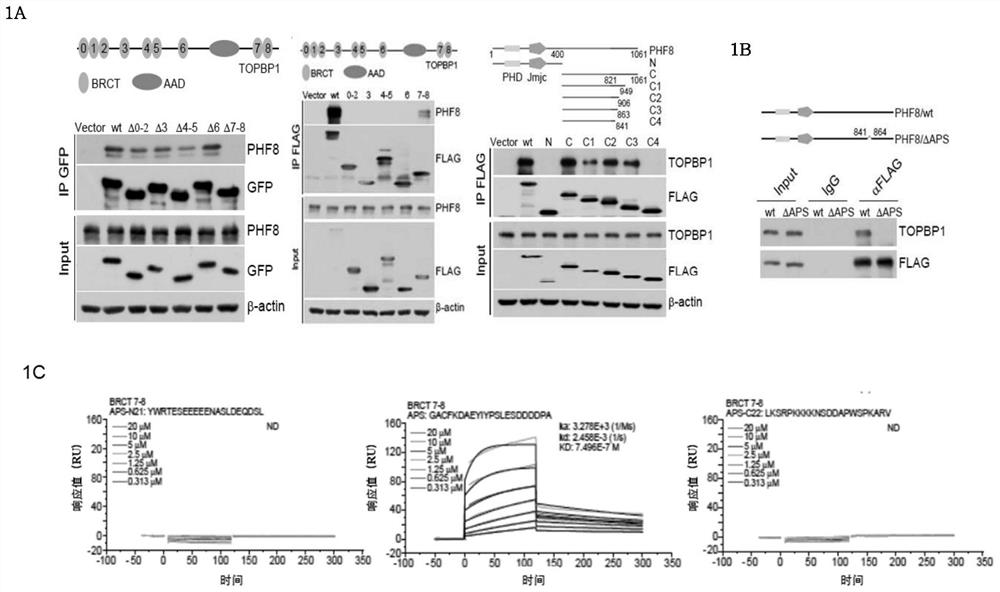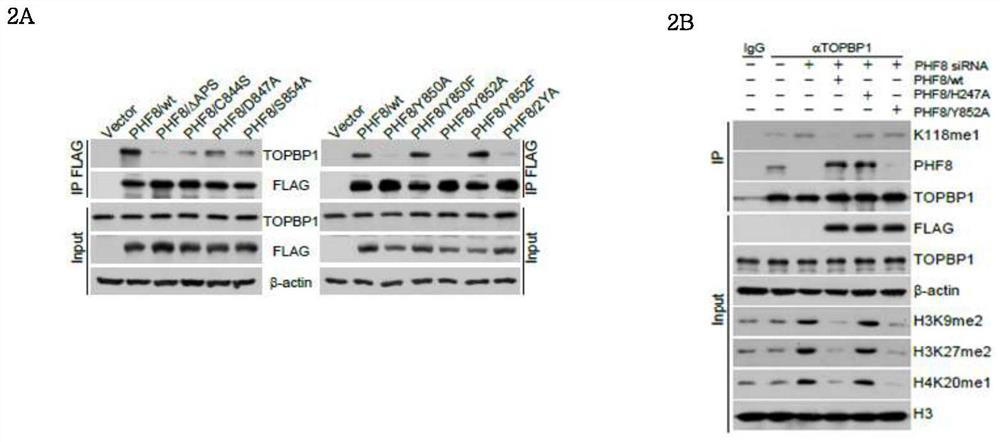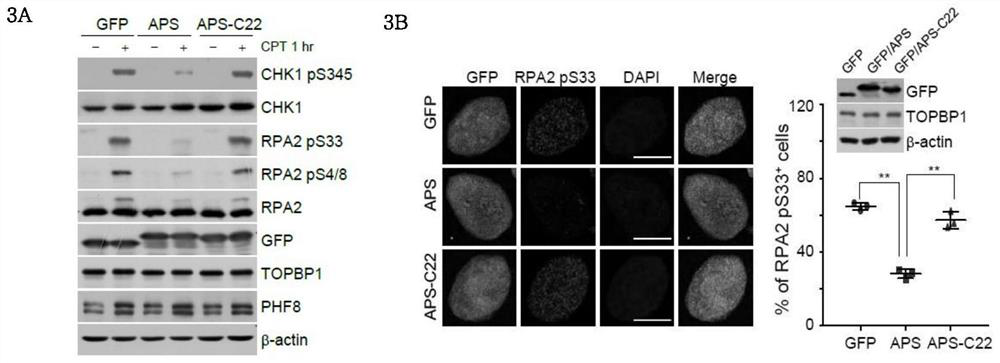A kind of polypeptide and its application in preparation of medicine for treating breast cancer
A breast cancer and drug technology, applied in the field of medicine, can solve the problems of reduced specificity of targeted enzyme active center and poor prognosis of breast cancer patients
- Summary
- Abstract
- Description
- Claims
- Application Information
AI Technical Summary
Problems solved by technology
Method used
Image
Examples
Embodiment 1
[0037] Example 1: Identification of PHF8 and TOPBP1 Interaction Modes from a Molecular Biology Perspective
[0038] 1. Molecular biological methods to identify the interaction site of PHF8 and TOPBP1
[0039] Domain deletion bodies (ΔBRCT0-2, ΔBRCT3, ΔBRCT4-5, ΔBRCT6 and ΔBRCT7-8) and domain truncated bodies (BRCT0-2, BRCT3, BRCT4-5, BRCT6 and BRCT7-8) of TOPBP1 were constructed, and the After transfection into HeLa cells, 72 hours later, co-immunoprecipitation experiments were used to find the key domains of the interaction, and the results were as follows figure 1 As shown in A, TOPBP1 binds to PHF8 through its BRCT7-8. At the same time, we constructed the truncated body of PHF8 (N, C, C1, C2, C3, C4), transfected HeLa cells and carried out co-immunoprecipitation experiments. We found that PHF8 was responsible for binding to TOPBP1 through its C-terminal APS. We further conducted a co-immunoprecipitation experiment to determine whether PHF8 deletion of APS would affect th...
Embodiment 2
[0045] Example 2: Using APS in combination with CPT and the PARP inhibitor rucaparib to kill tumor cells at the cellular level
[0046] 1. Preparation of GFP-vector, GFP-APS, GFP-APS-C22 Stable Expression Cell Lines
[0047] Viruses were prepared by linearized polyacetimide (PEI) transfection. The 293T cells were cultured in a 10cm petri dish. When the cells grew to 70%, the plasmid and PEI mixture were added in the ratio of plasmid (μg):PEI:OPTI-MEM=1:5:100. Plasmids include packaging plasmids (pMDLg / pRRE, pRSV-REV and pVSVG) and target plasmids (GFP-vector, GFP-APS, GFP-APS-C22). Viral supernatants were collected at 48 hours and 72 hours, respectively. Prepare the cell lines to be infected in advance, such as U2OS, MDA-MB-231, and leave a blank control group. After adding the virus solution for 24 hours, change to the normal medium for screening with puromycin.
[0048] 2. APS inhibits the activation of ATR signaling pathway in tumor cells
[0049] CPT was used at a conc...
Embodiment 3
[0055] Example 3: Inhibition of tumor growth using APS combined with cisplatin or rucaparib using a breast cancer mouse model
[0056] 1.PyMT Breast Tumor Primary Culture
[0057] PyMT mice with a tumor size of 15 mm × 15 mm were sacrificed, and their mammary tumors were removed, isolated and processed aseptically. Tumors were first washed extensively with ice-cold PBS to remove visible tissue pieces. Tumor tissue was minced with dissecting scissors in DMEM to homogenize to approximately 1 mm 3 The tissue was then resuspended and digested in digestion buffer (160 μg / ml collagenase and 25 μg / ml hyaluronidase) for 1 hour at 37°C, filtered through a 40 μm pore size cell strainer, and then seeded into in DMEM medium containing non-essential amino acids.
[0058] 2. Construction of PyMT breast tumor cells stably expressing GFP-APS and GFP-APS-C22
[0059] Viruses were prepared by linearized polyacetimide (PEI) transfection. The 293T cells were cultured in a 10cm petri dish. Wh...
PUM
 Login to View More
Login to View More Abstract
Description
Claims
Application Information
 Login to View More
Login to View More - R&D
- Intellectual Property
- Life Sciences
- Materials
- Tech Scout
- Unparalleled Data Quality
- Higher Quality Content
- 60% Fewer Hallucinations
Browse by: Latest US Patents, China's latest patents, Technical Efficacy Thesaurus, Application Domain, Technology Topic, Popular Technical Reports.
© 2025 PatSnap. All rights reserved.Legal|Privacy policy|Modern Slavery Act Transparency Statement|Sitemap|About US| Contact US: help@patsnap.com



